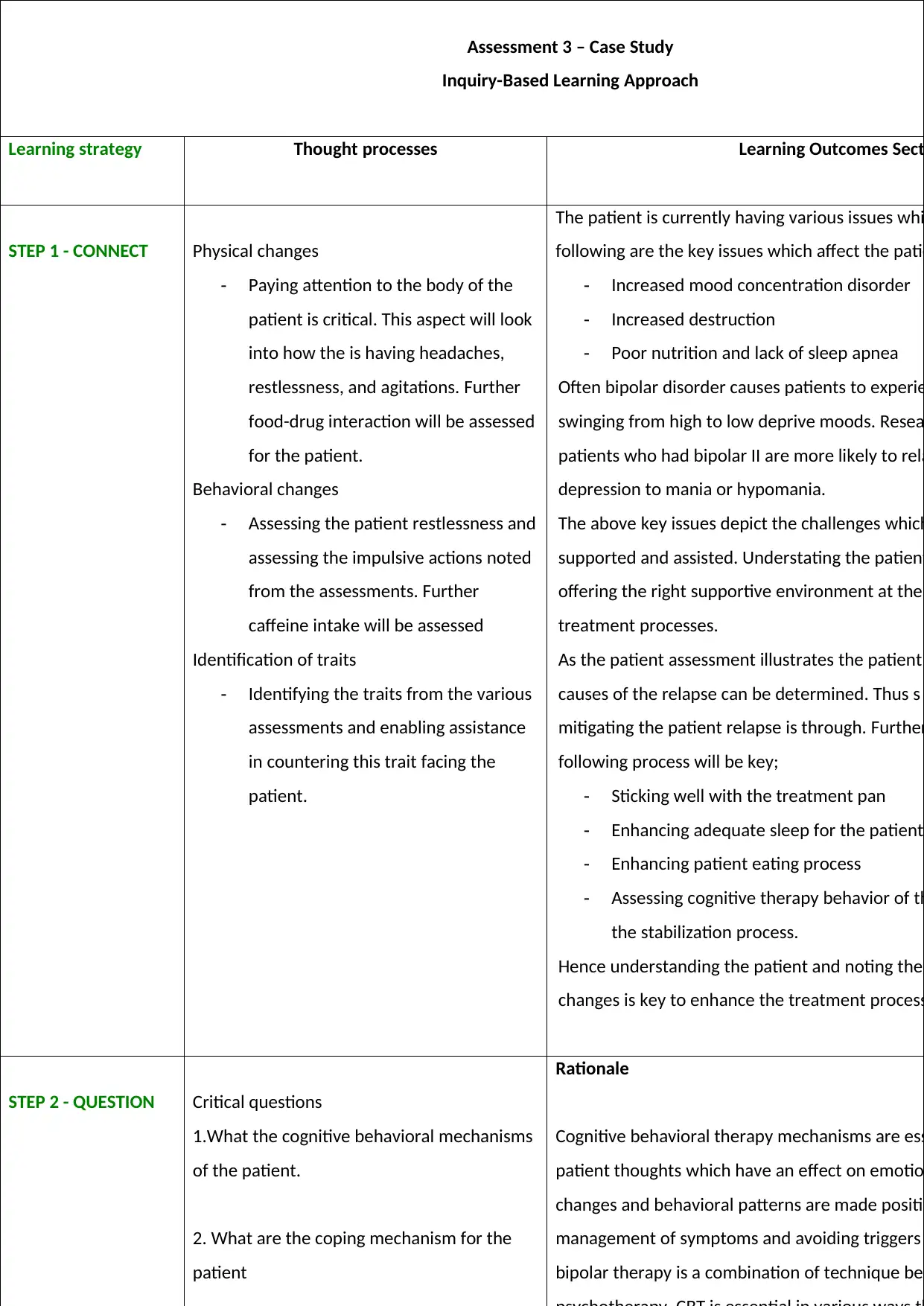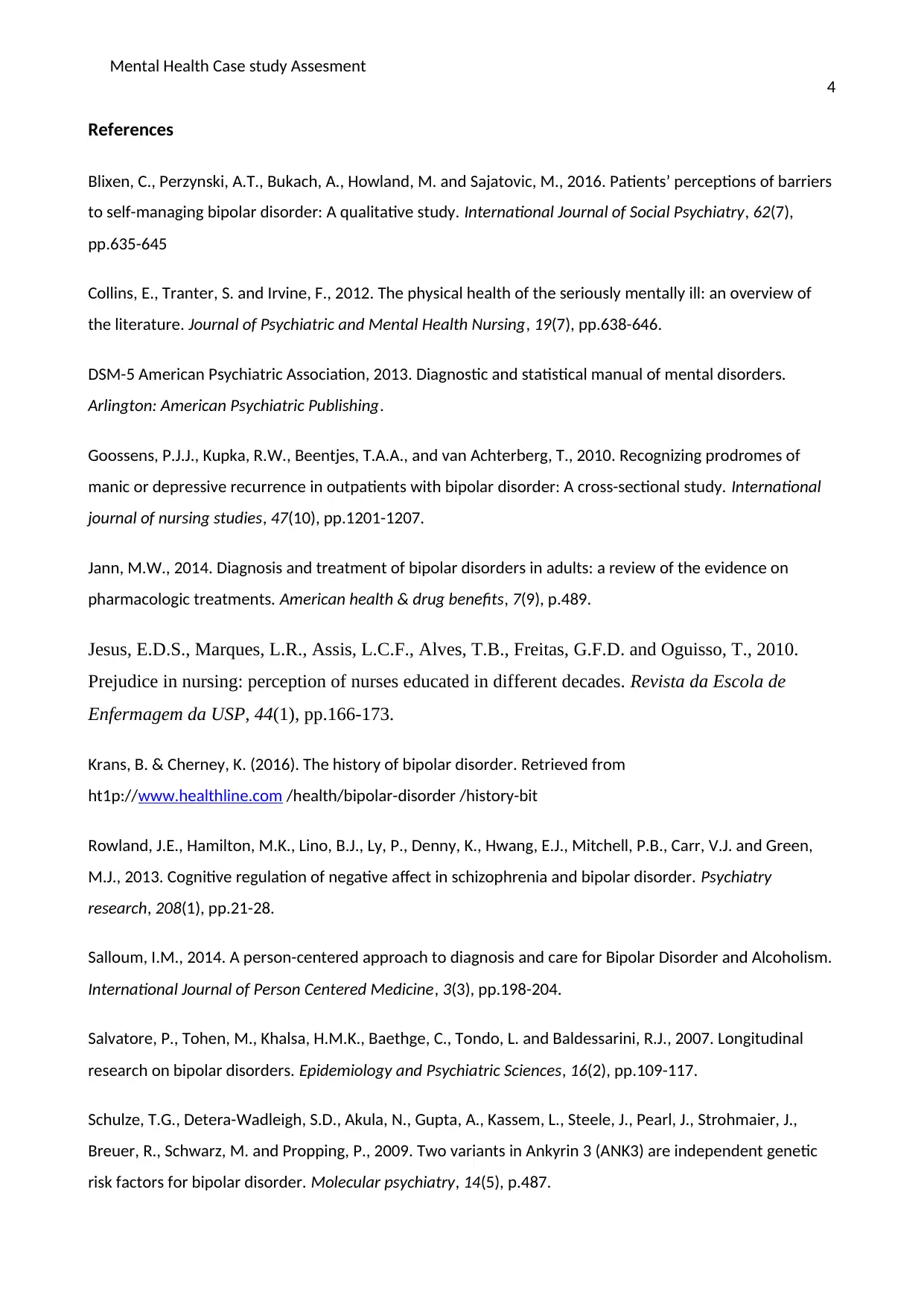Mental Health Case Study Assessment: Inquiry-Based Learning Approach
VerifiedAdded on 2023/06/05
|5
|883
|81
AI Summary
This case study assessment focuses on the mental health of a patient with bipolar disorder. It discusses the physical and behavioral changes, coping mechanisms, and cognitive behavioral therapy mechanisms for the patient. The inquiry-based learning approach is used to enhance the treatment process.
Contribute Materials
Your contribution can guide someone’s learning journey. Share your
documents today.
1 out of 5











![[object Object]](/_next/static/media/star-bottom.7253800d.svg)